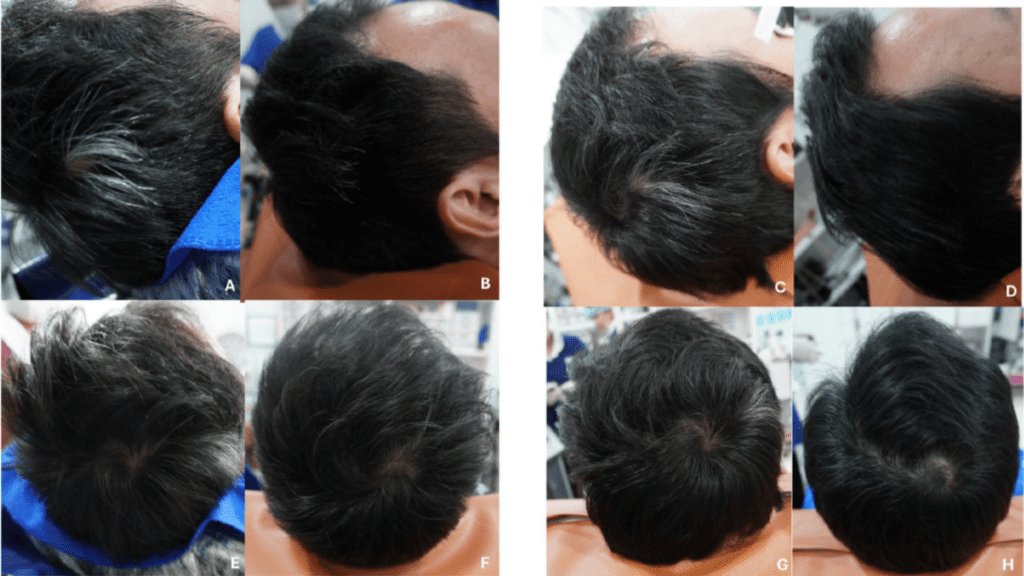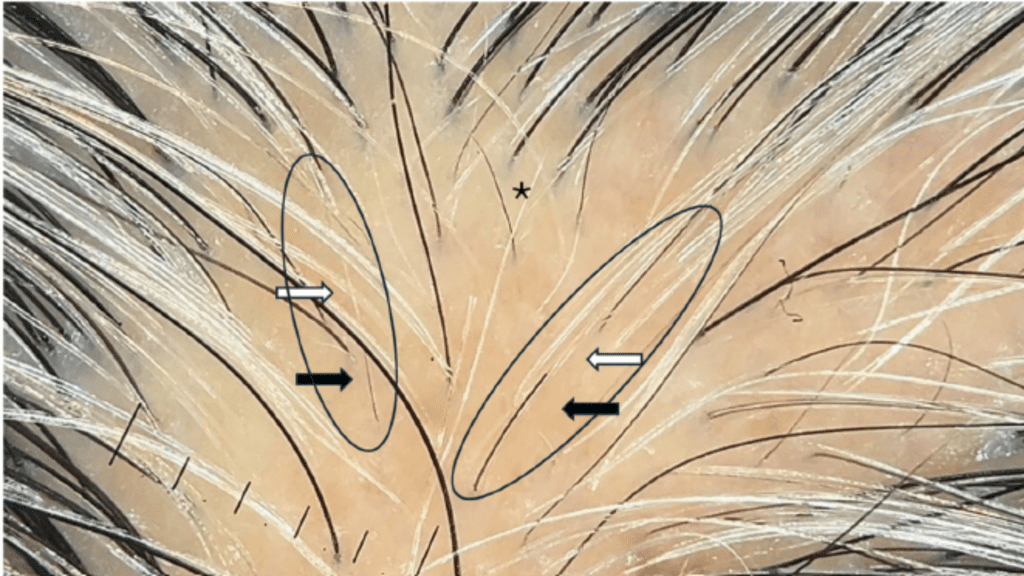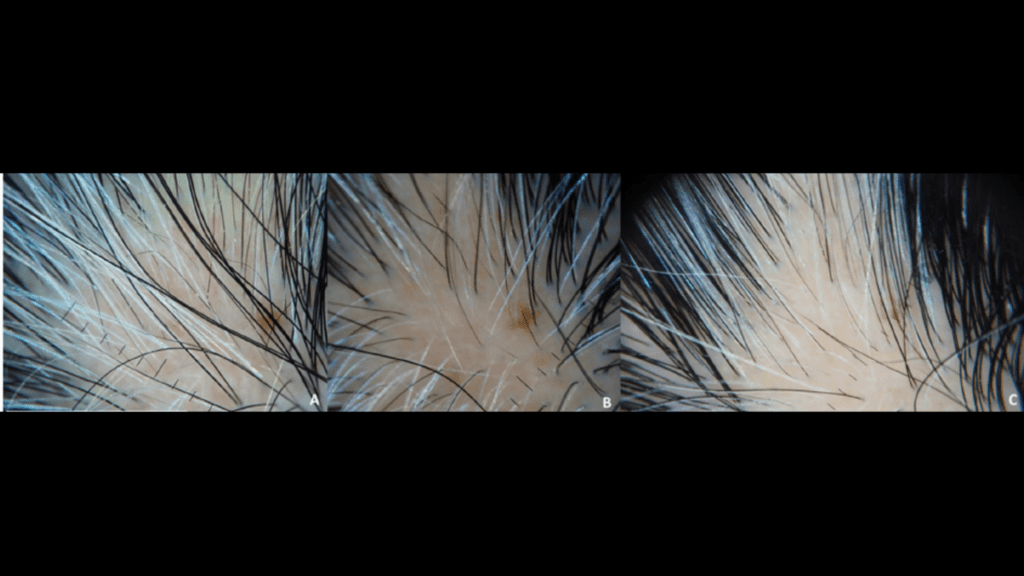Can White Hair Really Turn Black Again?
Have you ever noticed a patch of white hair appearing suddenly—perhaps on your scalp, beard, or eyebrows—and wondered if it could be reversed? You’re not alone. Many individuals with poliosis circumscripta, a condition causing localized white hair patches, struggle to find answers. But now, a groundbreaking hair repigmentation treatment is giving hope to patients looking for real solutions.
Recent studies reveal that combining exosome therapy with fractional picosecond laser (FPL) may help restore not only hair growth but also natural hair color. This innovative approach could mark the beginning of a new era in non-surgical hair restoration—where regrowth and pigmentation go hand in hand.
In this article, we’ll explore:
– What poliosis circumscripta is
– How exosomes and laser therapy work
– What the latest research shows
– Who may benefit from this treatment
– What to expect from the process
Let’s dive into the science and potential behind this new frontier in hair restoration.
What Is Poliosis Circumscripta and Why Does It Happen?
Poliosis circumscripta is a condition where hair loses its pigment and appears white or gray in sharply defined patches. It can appear on the scalp, eyebrows, eyelashes, or beard, and is especially noticeable in people with dark hair.
Why Does It Happen?
– Autoimmune disorders like vitiligo
– Genetic predisposition
– Trauma or inflammation of the scalp
– Medication side effects
– Dysfunction or depletion of melanocytes, the cells responsible for hair pigmentation
Although not harmful, poliosis can deeply impact self-image, and until recently, options for reversing it have been limited.
Breakthrough Hair Repigmentation Treatment Using Exosomes and Laser Therapy
A recent clinical case study published in the Journal of Cosmetic Dermatology documented the use of topical rose stem cell exosomes (RSCEs) combined with fractional picosecond laser (FPL) to treat a patient with poliosis and androgenetic alopecia. The results were impressive: not only did hair regrow, but the previously white areas also began regaining their black pigmentation.

This new treatment works in two key ways:
- Fractional Picosecond Laser (FPL) stimulates the scalp and creates micro-channels, increasing skin permeability and activating regenerative pathways.
- Exosomes, applied topically, deliver growth factors and microRNAs to reactivate pigment-producing cells (melanocytes) in hair follicles.
Benefits of the Treatment:
– Increases hair density
– Reactivates melanin production
– Minimally invasive and non-surgical
– Clinically observed regrowth of black hair
How Do Exosomes Help With Hair Regrowth and Repigmentation?

Exosomes are tiny extracellular vesicles released by stem cells. They act as cellular messengers, delivering proteins, lipids, and microRNAs to target cells, promoting healing and regeneration.
In this treatment, rose stem cell exosomes (RSCEs) were used. They are known to contain powerful regenerative signals.
The Role of MicroRNAs in Hair Pigmentation
The exosomes used in the study contain specific microRNAs such as:
– miR-200c – Promotes melanin synthesis by targeting SOX1 and activating MITF genes
– miR-21a-5p and miR-3196 – Encourage melanocyte proliferation and pigmentation
These miRNAs may be the key to reversing pigment loss in hair, reawakening dormant pigment cells at the follicular level.
Who Can Benefit From This Hair Repigmentation Treatment?
This emerging therapy may be ideal for people experiencing:
– Poliosis circumscripta (white hair patches)
– Early or premature graying
– Hair depigmentation after trauma or surgery
– Color loss due to androgenetic alopecia
You may be a good candidate if:
– You have localized white or gray hair
– You want a non-invasive, regenerative solution
– You are not responding to traditional treatments
– You are open to innovative, science-based therapy
This approach focuses on restoring both the color and density of hair—offering more complete cosmetic improvement than standard options.
What Happens During Treatment?
Here’s what you can expect from this hair repigmentation treatment protocol:
- Initial Consultation – Scalp analysis and treatment plan
- Exosome Application – Topical RSCEs applied to the scalp
- Fractional Picosecond Laser – Laser creates micro-channels for deep absorption
- Treatment Cycle – Typically 3–4 sessions spaced weeks apart
- Follow-Up – Re-evaluation after 6–10 months and potential retreatment
Clinical Results
– After 4 sessions: Thicker, pigmented hair began regrowing in the white patch
– At 10-month follow-up: Continued pigment return and black hair density increased
– After 3 more sessions: Results maintained and improved
Is This Hair Repigmentation Treatment Safe?
This therapy is non-surgical, and the study reported no adverse effects.
Potential minor side effects:
- Temporary redness
- Mild scalp sensitivity
There is no downtime, and most patients resume daily activities immediately.
What’s Next for Hair Repigmentation Treatments?
While currently available in select clinics in Asia and Europe, exosome-based therapies are expanding quickly. With promising early results, more providers will begin offering this treatment in the near future.
At TopHairLossClinic, we monitor and collaborate with clinics pioneering the most advanced techniques in hair restoration and pigmentation therapy.
Conclusion: A New Future for White Hair Patches
The combination of fractional picosecond laser and rose stem cell exosomes represents a new frontier in hair repigmentation treatment. This approach offers a safe, effective, and non-invasive method to restore both hair growth and color—especially for conditions like poliosis circumscripta.
At TopHairLossClinic, we connect you with the world’s leading specialists offering innovative therapies backed by real science. If you’re experiencing white hair patches, premature graying, or color loss from alopecia, it’s time to explore the possibilities of regenerative medicine.
This article references and includes clinical images from: Lueangarun S, Cho BS, Tempark T. Achieving Sustained Hair Repigmentation in Poliosis Circumscripta: Retreatment Outcomes Using Exosomes and Fractional Picosecond Laser. Journal of Cosmetic Dermatology. 2025;24:e70115.
🔗 Read the original study here:
DOI: 10.1111/jocd.70115
Published under the Creative Commons Attribution License (CC BY), permitting reuse with proper citation.


